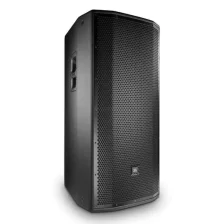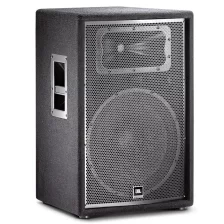JBL JRX225D
Original price was: ₹78,900.00.₹47,340.00Current price is: ₹47,340.00.
Dual JBL low frequency drivers with a 64 mm (2.5 in) diameter edgewound ribbon voice coil which provides more crosssectional wire area in the voice coil gap than round wire designs, for greater efficiency and power handling.
JBL 2414H-C 25 mm (1 in) polymer diaphragm compression driver improves high frequency performance as well as system reliability.
The advanced network topology crossover design shapes frequency response and delivers coherent summation in the crossover region.
Description
High-voltage capacitors and inductors with massive cores and heavy gauge wire enable the crossover network to handle high power without saturating.
Progressive Transition™ high frequency waveguide provides superior coverage control, reduced distortion, and smoother frequency response.
The rugged, acoustically superior enclosure is constructed from 19 mm (.75 in) MDF (Medium Density Fiberboard) using advanced adhesives and mechanical fastener technology for extreme durability and improved low-frequency performance.
Sonic Guard™ protects the high frequency driver from excess power without interrupting the performance.
- Dual JBL low frequency drivers with a 64 mm (2.5 in) diameter edgewound ribbon voice coil which provides more crosssectional wire area in the voice coil gap than round wire designs, for greater efficiency and power handling.
- JBL 2414H-C 25 mm (1 in) polymer diaphragm compression driver improves high frequency performance as well as system reliability.
- The advanced network topology crossover design shapes frequency response and delivers coherent summation in the crossover region.
- A “Quasi 3-Way” design offers the extra bass for which a dual fifteen system is designed, but without sacrificing performance in the critical mid-range. The upper woofer produces mid-frequencies and bass, while the lower woofer concentrates on bass only. The reduction in mid-range phase cancellation greatly improves midrange sound quality and coverage.
- High-voltage capacitors and inductors with massive cores and heavy gauge wire enable the crossover network to handle high power without saturating.





